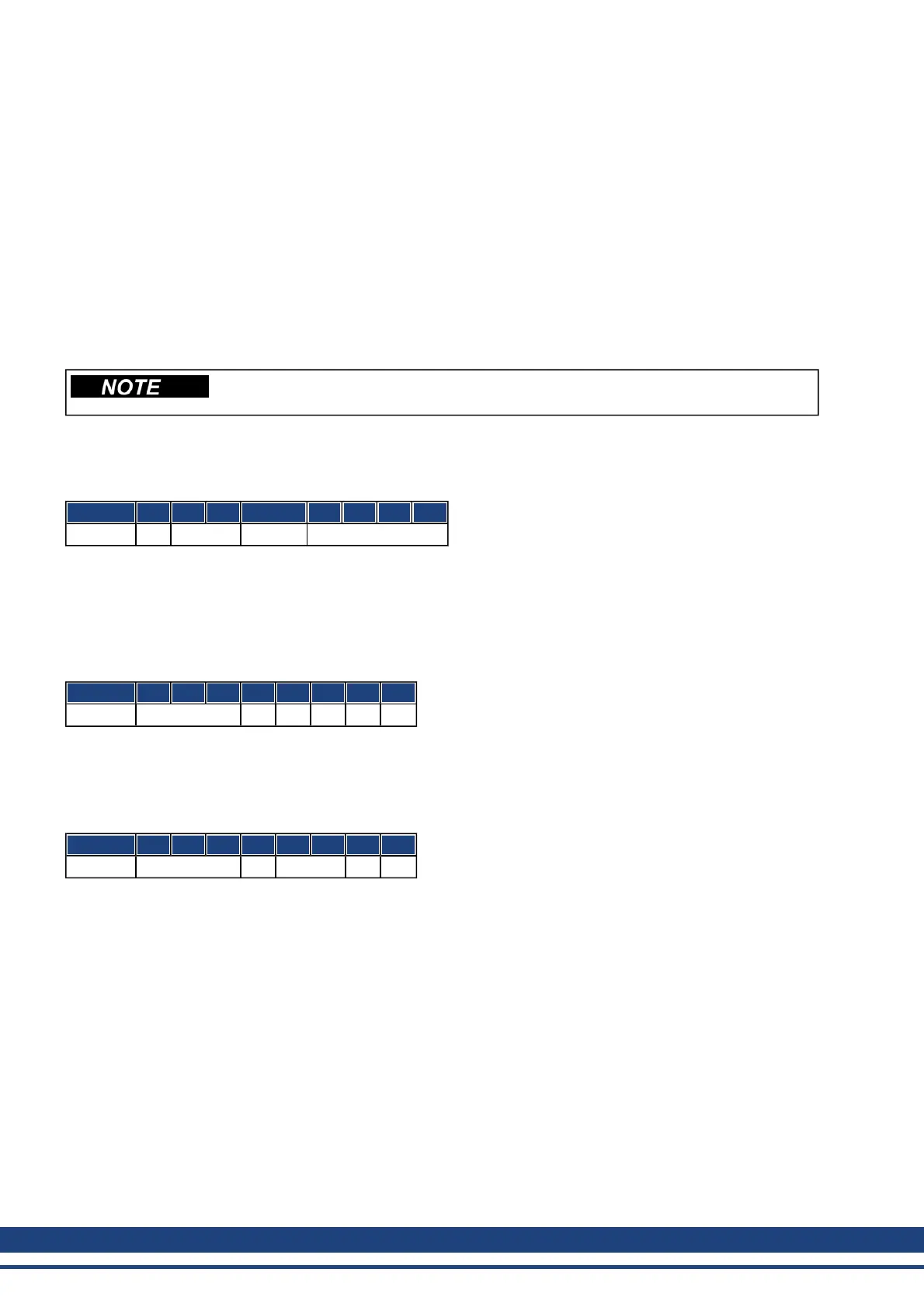AKD User Guide |
20.5.4.5 Service Data Objects (SDO)
SDOs are used to implement access to the Object Dictionary. The SDOs are required for parametrerization and
for status polling. Access to an individual object is made with a multiplexer via the Index and Subindex of the
Object Dictionary. The following communication protocols are supported by AKD:
l Initiate SDO Download Protocol
l Download SDO Segment Protocol
l Initiate SDO Upload Protocol
l Upload SDO Segment Protocol
l Abort SDO Transfer Protocol
The definitions of the individual communication services and protocols can be found in DS301.
Examples of the usage of SDOs can be found in the appendix from page .
Since a SDO is a confirmed service, the system must always wait for the SDO
response telegram before it is allowed to transmit a new telegram.
Composition of the Service Data Object
An SDO consists of the following components:
Byte 1 2 3 4 5 6 7 8
Content R/W Index Subindex Data
1. The control byte (Byte 1):
The control byte determines whether the SDO should write or read the content of the entry in the Object Dic-
tionary. A description of the complete Object Dictionary for AKD=> p. 119. Data exchange with the AKD is gov-
erned by the CMS multiplexed domain protocols standard, as described in the CAN standard DS 202.
To read data, the control byte must be written in the manner shown below:
Bit 7 6 5 4 3 2 1 0
Content ccs=2 X X X X X
ccs => client command specifier (ccs = 2 => initiate upload request)
X => free data
So a value of 0100 0000 (binary) or 40h must be transmitted in the control byte.
The drive sends back a corresponding response byte:
Bit 7 6 5 4 3 2 1 0
Content scs=2 X n e s
scs =>server command specifier (scs = 2 => initiate upload response)
n =>only valid for e = s = 1, if this is so, n contains the number of bytes that do not contain data
X =>free data
If reading is successfull, the response byte always has set the bits 0 and 1 (e = s = 1).
Encoded byte length in the SDO response:
0x43 - 4 bytes
0x47 - 3 bytes
0x4B - 2 bytes
0x4F - 1 byte.
If an error occurs, scs is set to 4, the response byte is 0x80 and the error information is in
the four byte data field. The decoding of the error => p. 55
47 Kollmorgen | December 2010
